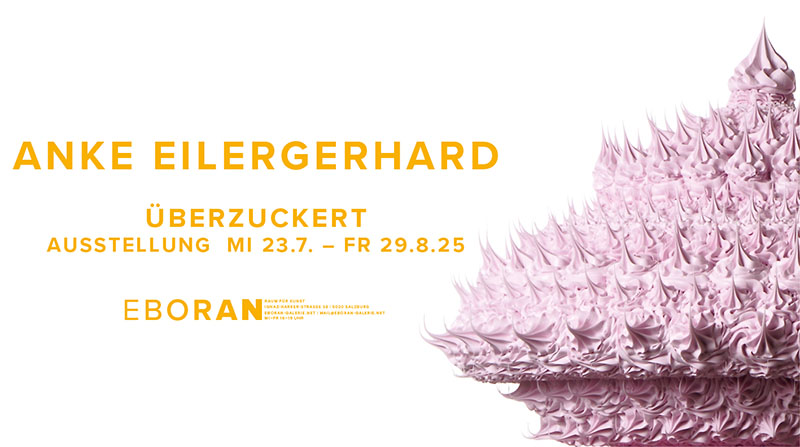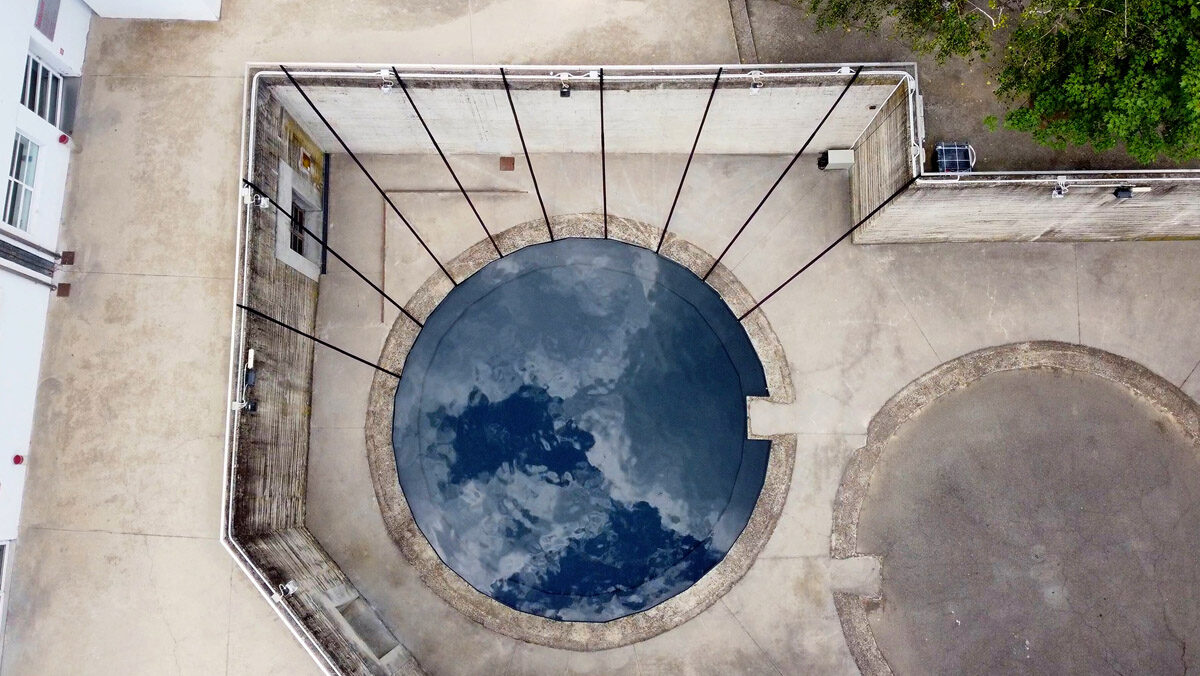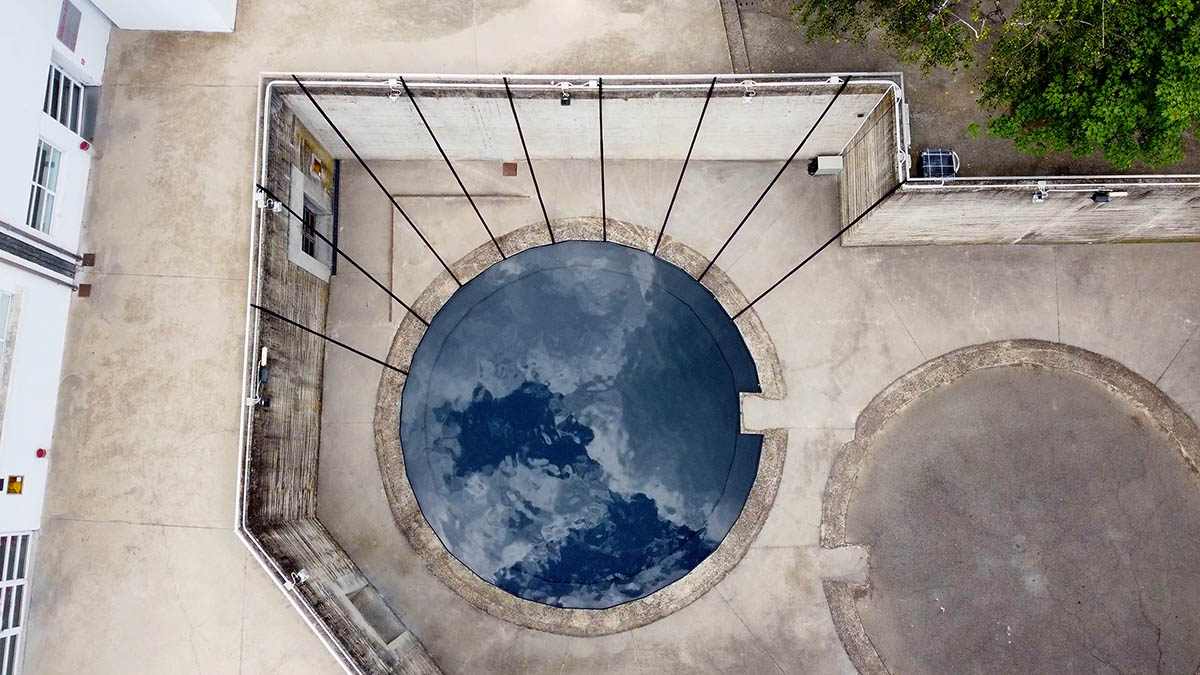
Each of her works is preceded by a long preparation time, dedicated to the knowledge of the phenomena that she is analyzing. Hers are not fixed forms in time, closed in themselves, on the contrary, they cross their own limits: a modus operandi that has been decisive for making art using alternative means to the traditional ones and continue to experiment especially the sound, the installation, and the video.
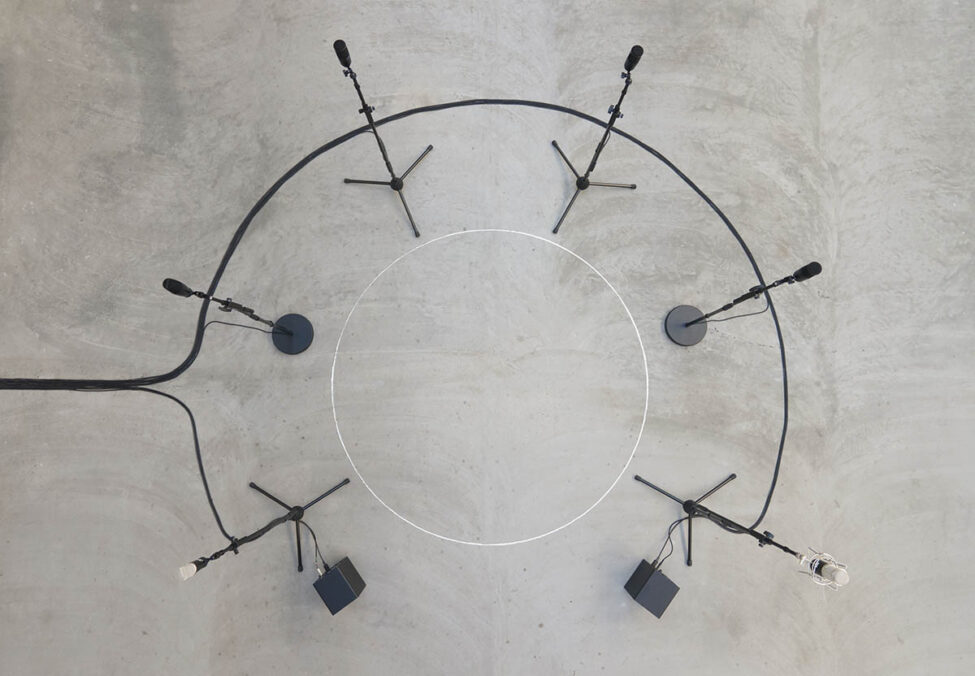
Hoquetus_sound installation_frames from video documentation_2021_courtesy the artist 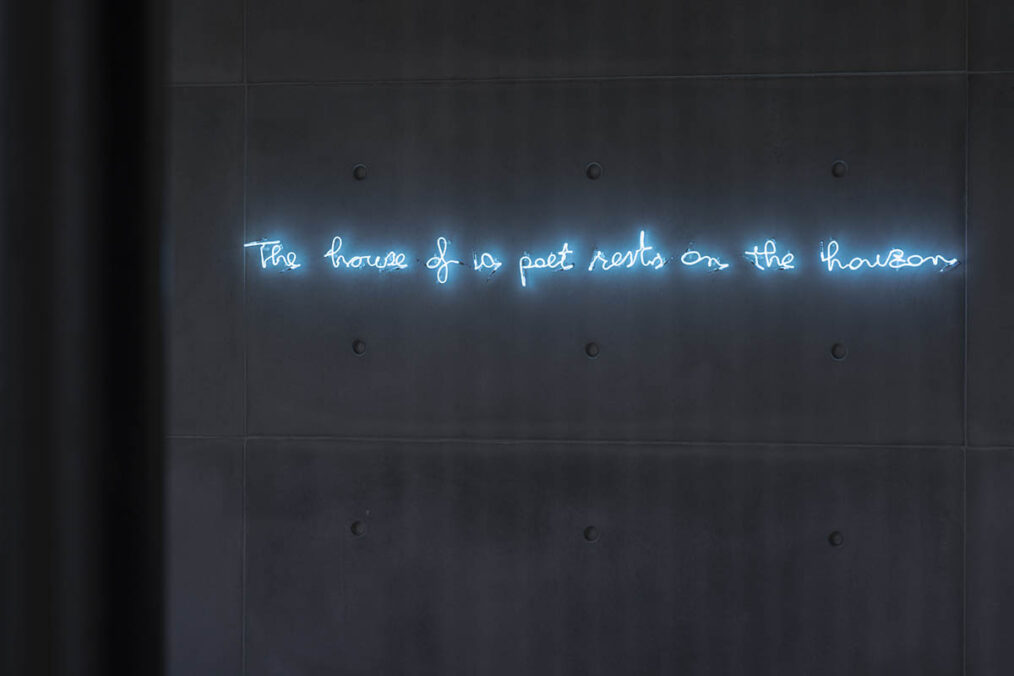
The house of a poet rests on the horizon_neon sculpure hand blown_2021_ph. Lorenzo Palmieri_courtesy Nembrini Collection
Can you tell us about your background?
My curiosity for art was born at a young age, (I still remember when) a teacher at the primary school brought us to visit an impressionist exhibition and I was impressed by this abstract look at life. When I grew up, I decided to enroll at the University in the faculty of Literature but I didn’t finish it and I had a trip to Switzerland: during my first time at Art Basel I got caught by an artwork of a Franco-American sculptress, Louise Bourgeois. Since then, my life changed, I applied to the Academy of Fine Arts and I immersed myself in the obsessed study of visual language. In my first three years of the Academy, I graduated in painting but presenting a performative video artwork as a thesis, later I pursued two years at the Brera Academy (Milan) presenting my first sound installation: I Confini di Babele (Boundaries of Babel) as a thesis. Then the Master at Ensba (École nationale supérieure des beaux-arts of Lyon) of Lyon where the teachers and the artists that I had as representatives contribute to undermine dogmas and go beyond.
What inspires you?
I think that I am never able to switch off the channel. I always keep my eyes and ears alert on the world and everything becomes the source of suggestion. I also work a lot with my subconscious, I let oneiric images grow, they come from my night dreams or from my daydreams. There are elements that more attract my attention than others, such as the water (sea, lake, river), the sky, the voice, the time, and the invisibility.
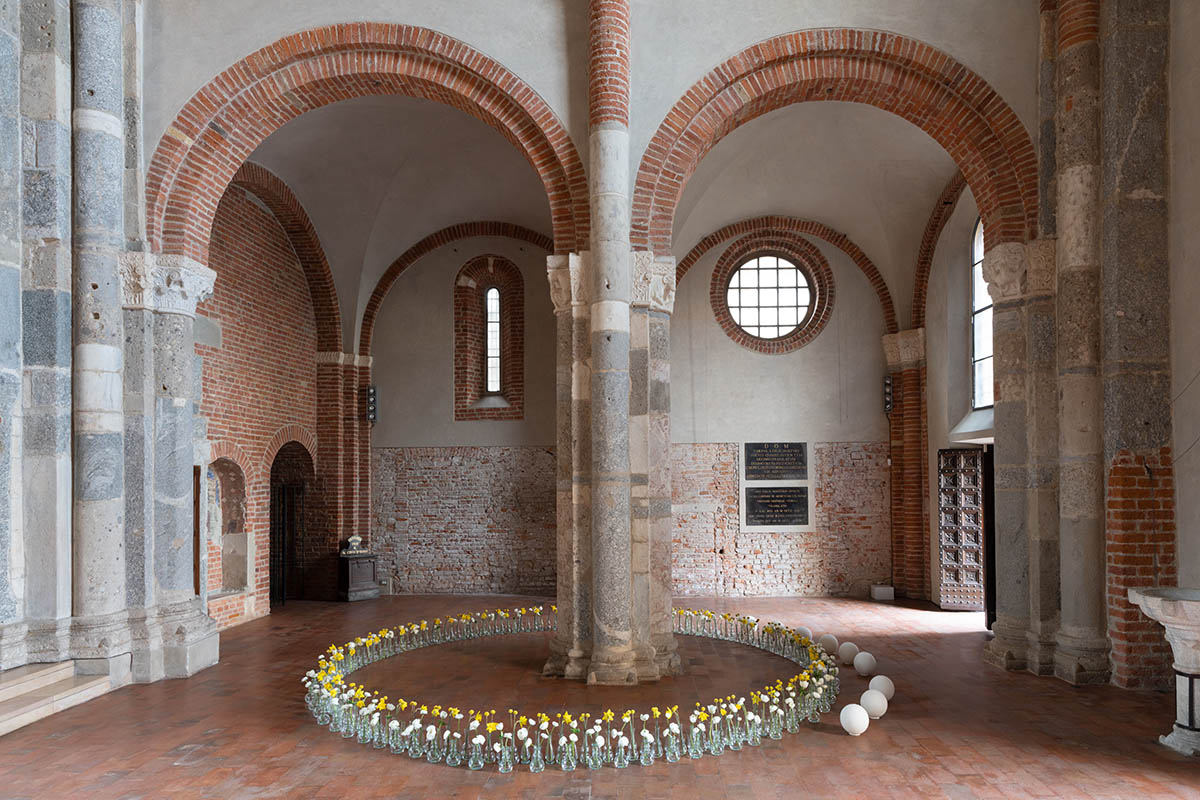
How would you describe your artistic style and approach?
The distrust of the image is a sign of the way of placing myself in relation to the materials and to the development of the necessary work to realize the artwork: I would call it “airy” approach. I put myself at the right distance accepting that multiple directions can be taken to realize it. It is also an approach affected by the possibility itself to be able to satisfy the necessity I have at the moment I need to realize an artwork. The way for a possible synthesis comes in the moment I clash with a mean and I find myself facing the choice of another one. For example, I experience drawing as the sketch of an idea. The drawing does not move, it does not produce light, and it does not allow me to create a “choreography” that leads me deep into space. This situation pushed me often to look for something else. The alternative that I found in the installation is the possibility to hold together more parts through continuous transformations. Along with the insufficiency of the image – but I would say to the one that is to all affects my criticism toward it, since I constantly clash against it – there is my need to obtain combinations. I can obviously do it on paper, with drawing or other illustrative practices but the actual outcome can only take place through the installation, that is establishing relations that can also be to the limit of the possible, even unimaginable, which find shape admitting limits and possibilities set by the reality. For example, for the artwork Venere Bugiarda 2023 (shown during the exhibition Aperçues recently concluded in the city of Milan) I established a relation between the stone, the glass, and some organic materials. Three hundred glass jars evocate a big sun; next to it, drawing with a semicircle Venus’ orbit, I placed nine alabaster spheres on which the letters that create the adverb “per sempre” (forever) are sculpted.
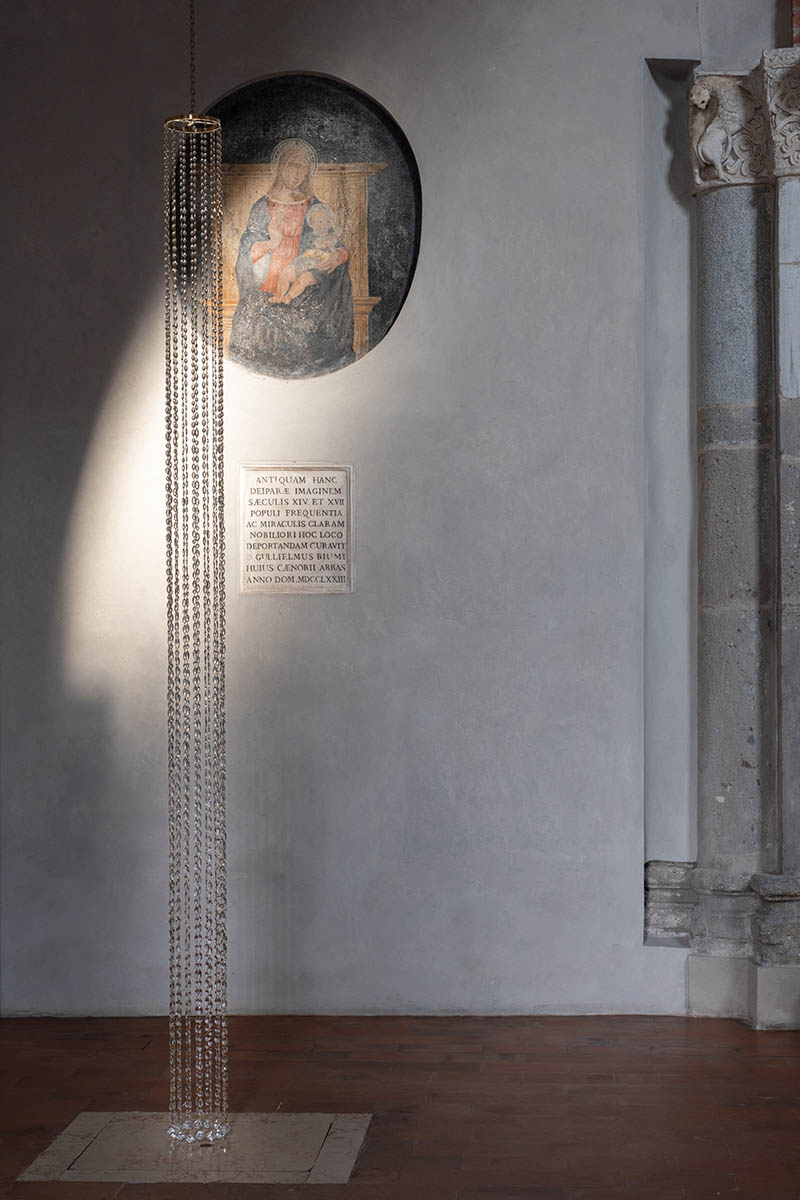
Can you tell us about your background in painting and sculpture, and how you transitioned to working with mediums such as video and sound in your artistic practice?
I remember that during my second year of Fine Arts Academy, my painting teacher’s assistant passed by, and looking at my painting she said: Only today I can understand what she meant. The sound and the video allow me to create a narration in space and time leading the user into this combination, this happened during the installation designed for Merz Foundation: The indeterminacy of an encounter (2021). I think of the environment considering it essentially a space of possibilities that, being naturally changeable, requires a due attention to the elements and the factors that change it. The space, for me, is a point of departure, it gives me inspiration. In it will be the artwork but also who can experience it. I can’t focus on the first one neglecting people.
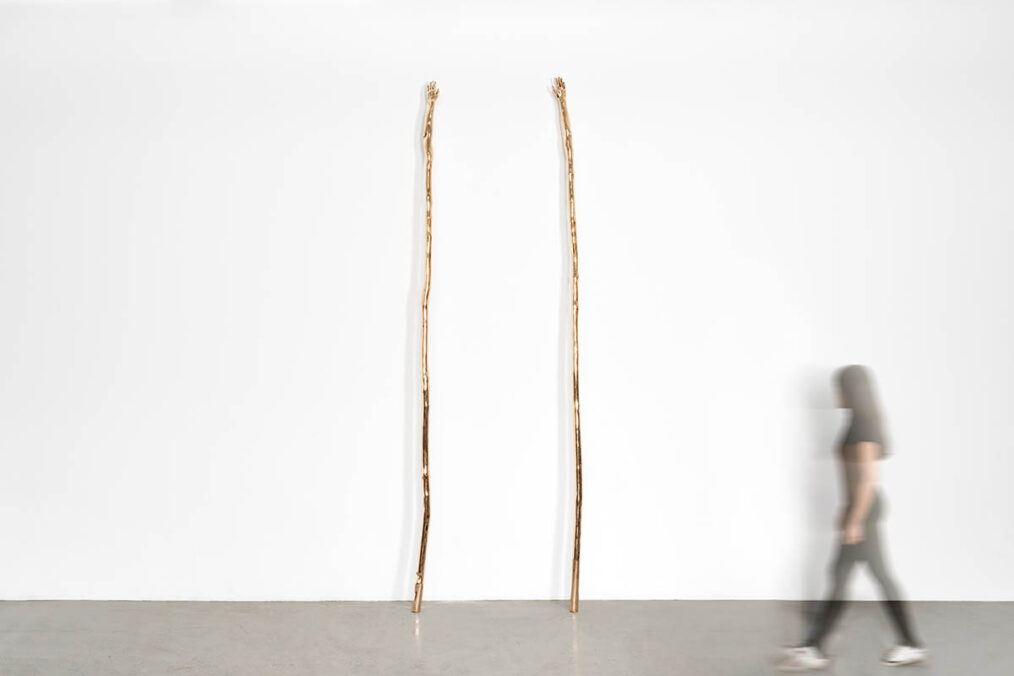
How do you approach experimentation in your work, particularly when it comes to exploring new materials?
When designing The Indeterminacy of an Encounter (2021) I did a kind of jump, because I was able to work on an image that revealed itself to me, reaching it only through a continuous relation with space and time. Obtaining a sort of natural performance: the sky reflected on water creating a big liquid pupil that could be observed from multiple points of view, next to it placed in a semicircle, nine black wires five meters long hid a system of loudspeakers. The user could turn around a huge eye made of water and sky. At the right moment I discovered the possibility to work in relation to nature – so, not looking for a directional performance, but admitting that it could constantly change – I understood not just the sense of the relation with space in this environment but also with the factors that can change it, including the natural ones. This relationship related to each other has put me in a position to review my subjectivity as well. Naturally, they influenced the following transformations of my work. The approach to the new material, as it happens for the space, becomes a point of departure, after the study phase I focus on its limits and on how to cross them. Something happened with Mani come rami che toccano cielo (Hands like branches touching the sky), a work produced in Fonderia Artistica Battaglia during the recently concluded residency. I had never really worked with bronze, I had a prejudice for a material that was difficult to make aerial due to its heavy nature. While the work produced in the residency proved to me that each material can overcome the characteristics of its nature.
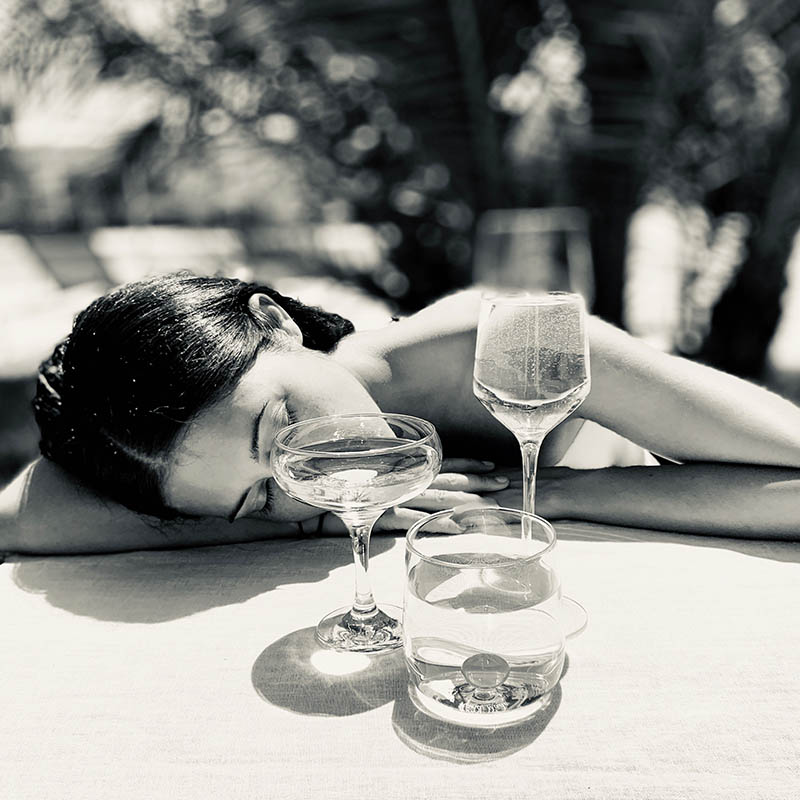
Can you discuss any upcoming projects or exhibitions that you have in the works?
At the end of June I will participate in a collective for an amazing project that is arising in Sicily, 8 Albe. 8 Albe is committed to supporting the development of contemporary art, enhancing its transversality and interdisciplinarity of its languages, and disseminating its knowledge in Italy and abroad through innovative tools. It is so exciting that this is happening on my origins island: Sicily. In addition, a few days ago I learned that I entered an important Italian Award that chooses every year twenty artists, and for this occasion, I will have to produce an unpublished work. Before the beginning for the project of the exhibition Aperçues, I was working on a small installation in which for the first time I would have combined several elements together, and the challenge will be accomplished.
Nina Carini – www.ninacarini.com
Between the recent exhibitions where Nina Carini showed her artworks, can be remembered: Aperçues (Basilica di San Celso, Milano, 2023) Per Sempre e toujours (Space Nembrini Collection, Bergamo 2022) Meteorite in giardino 13 (Fondazione Merz, Torino 2021) Le déjeuner sur l’herbe (NM Contemporary, Eze-Bord-de-Mer 2021) For 24h CALL ME POET! Let’s meet on the horizon (Casa Testori and Casa degli Artisti, Milano 2020), Are my eyes distracting my hearing? (NM Contemporary, Monaco 2019). She was a finalist during the 8th Foundation Award VAF with artwork Confine (2017) currently in the collection at MART Modern and Contemporary Art Museum of Trento and Rovereto.



